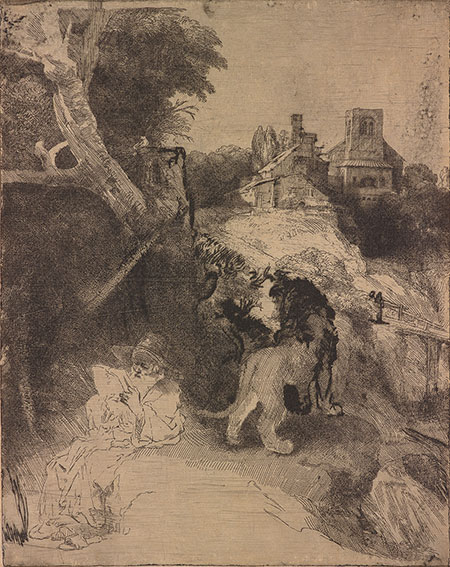
Although Rembrandt van Rijn (1606–1669) and his work are now seen as quintessentially Dutch, in his own time, the very definition of ‘Dutch’ identity was still being shaped. This exhibition brings together, for the first time, a remarkable group of drawings, etchings, and paintings to highlight the often overlooked but formative presence of migrants, immigrants, exiles, and refugees in Rembrandt’s world and work. It also foregrounds stories of diaspora that figure prominently in many of his etchings, newly envisioning the impact of migration on seventeenth-century life around the world.
In the seventeenth century, up to sixty percent of residents in Amsterdam—where Rembrandt lived and worked—hailed from elsewhere in the world, in part because the Dutch Republic had become a bastion in Continental Europe for religious and political tolerance, though not all people enjoyed equal freedoms, especially in Dutch colonial territories. The lion, a symbol for the fledgling Republic’s people and lands, also appears in Rembrandt’s etchings, often in the context of stories about exile, refuge, and migration. The aim of the artist is thus the aim of this exhibition: to reveal the many ‘lions’ that irrevocably shaped him and the vast, emerging Republic in which they all lived and worked.
The best impressions from the Morgan’s collection of celebrated, but rarely exhibited, etchings by Rembrandt will be presented alongside selected loans to create juxtapositions and unities between artworks that are seldom seen together.
Organized by Sarah Mallory, Annette and Oscar De La Renta Assistant Curator, Department of Drawings and Prints.
Rembrandt van Rijn. St. Jerome Reading in an Italian Landscape, ca. 1653. Etching and drypoint, printed on Japanese paper, 259 x 210 mm. Purchased by J. Pierpont Morgan in 1905. The Morgan Library & Museum (RvR 165).
